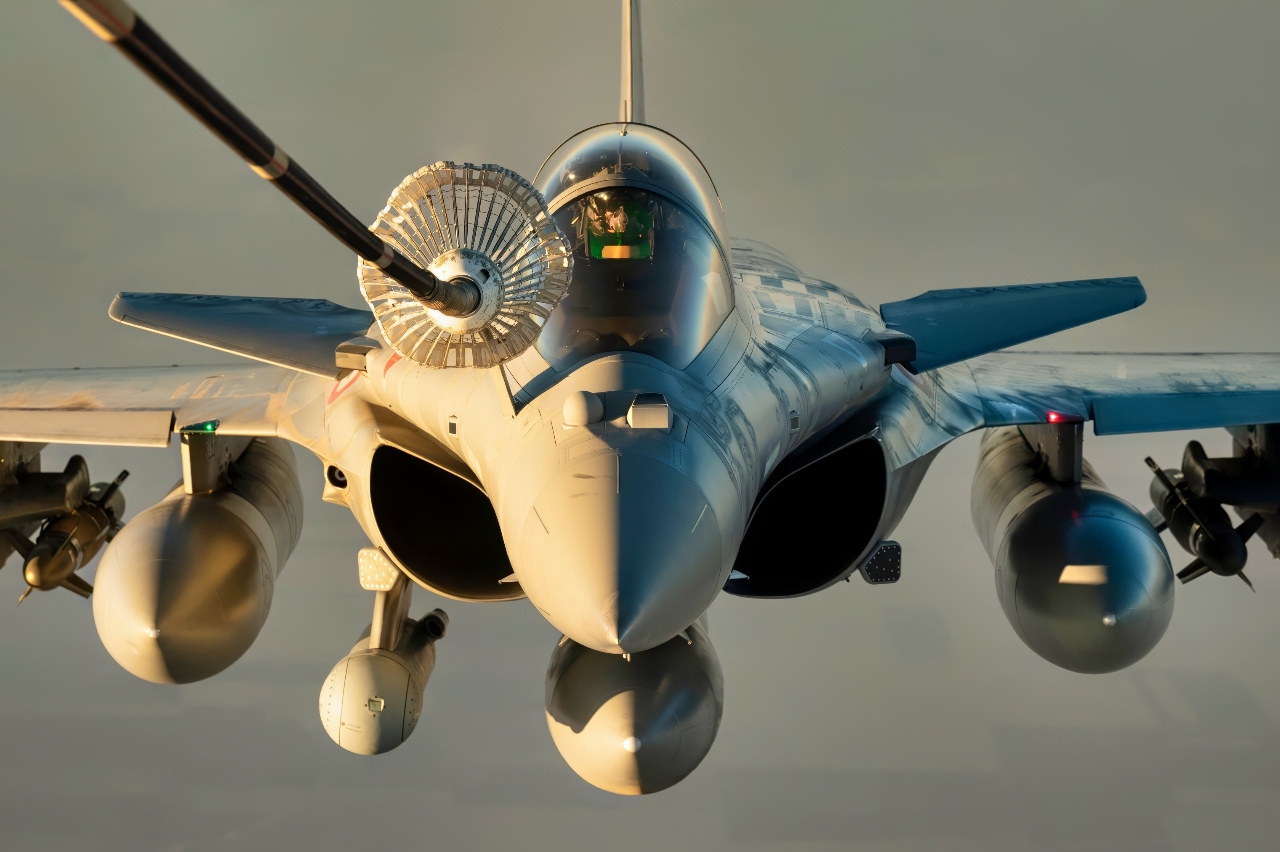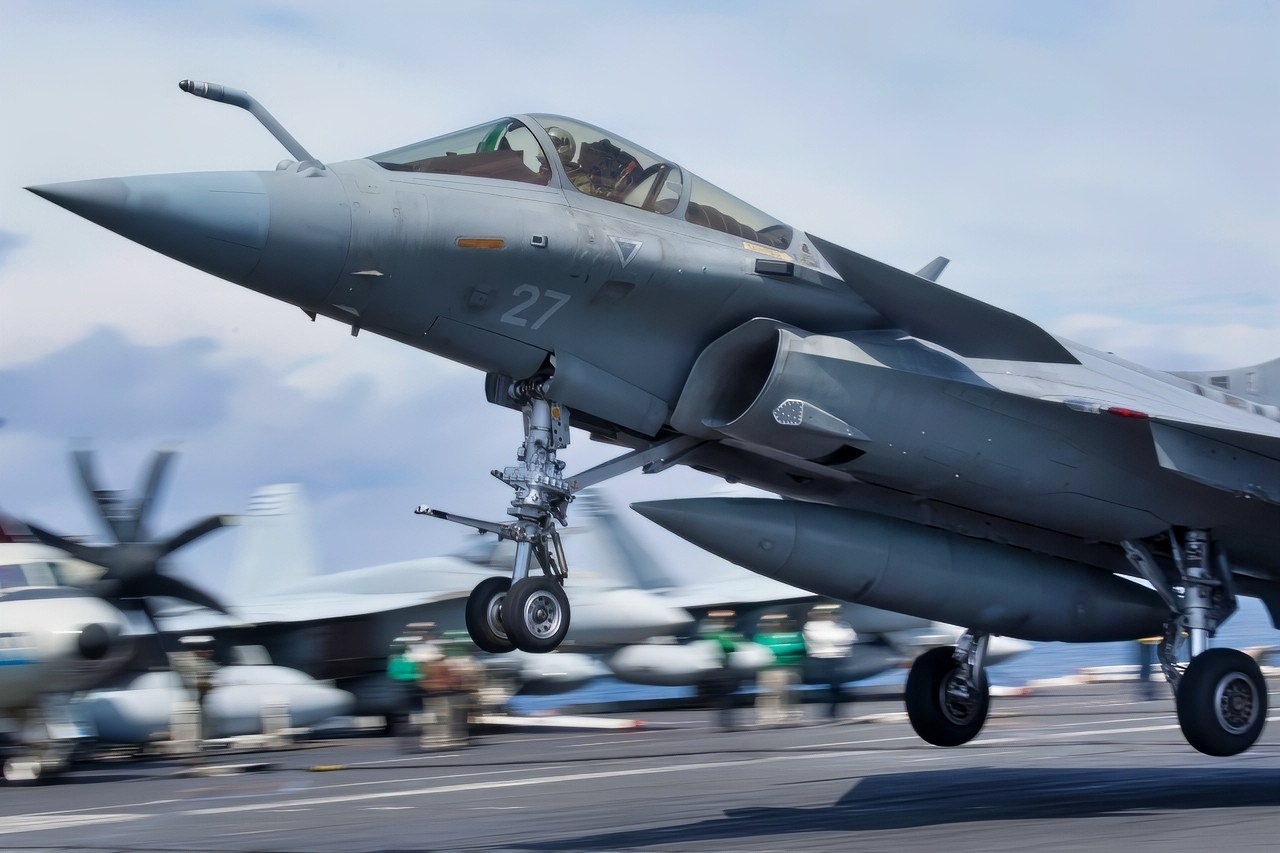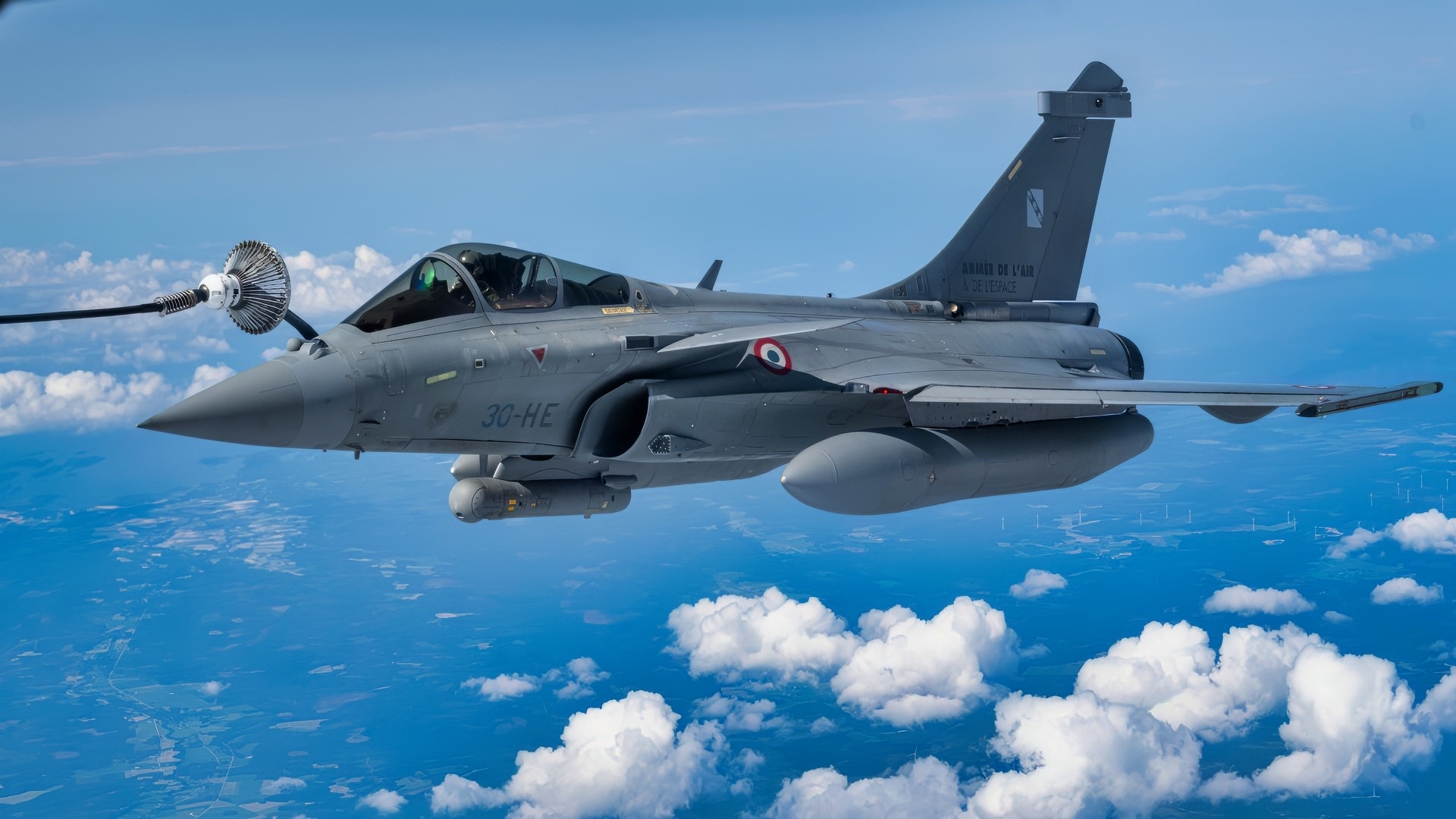Key Points and Summary – Days after nearly two dozen Russian drones violated Polish airspace, France rapidly deployed three Dassault Rafale fighters to Poland—an unusually swift, low-drama NATO move aimed at calming a tense air picture.
-The Rafale brings a potent sensor/EW blend: the Thales RBE2 AESA, a nose optronics suite for passive ID, and the SPECTRA defensive system for emitter geolocation and jamming, plus Meteor long-range AAMs.

Dassault Rafale Ready for Action. Image Credit: Creative Commons.
-Compared with Poland’s F-16C/Ds using older MSA radars, the Rafale detachment can sit alert, run focused CAPs, and react with a cleaner track picture.
-It’s not force-balancing in numbers—but it is smart, quiet deterrence when Poland needs it.
France Deploys Dassault Rafale Fighter Aircraft to Poland
WARSAW, POLAND – Following last Wednesday’s incursion by almost two dozen Russian drones into Polish airspace, France’s Armée de l’Air et de l’espace (French Air and Space Forces) has moved a small detachment of three Dassault Rafale fighters to the Central European nation.
The announcement came from the office of the French presidency on September 12. Still, in an unusual step, the official communique, as one press account describes it, “reads like a straightforward security decision taken at speed.”
Decisions within the NATO alliance are known for being overly burdensome and lengthy processes.
So, the quick decision to send these aircraft to Poland runs counter to the usual process of serial “consultations” that typically precedes deployments of this nature.
Poland has ramped up its air policing operations several times throughout the year in response to almost “grey-zone” type of cross-border incidents and disruptions of Polish air traffic. Poland’s armed forces have also been establishing a higher rate of readiness since Moscow’s invasion of Ukraine in February 2022, and after a December 2023 episode when a Russian cruise missile entered Polish airspace.
The move by Paris has been criticized as being too little or so small in numbers as to be no more than symbolic. But air combat analysts point out that having another NATO ally enter the picture is not just a PR stunt but is a sensible way to stabilize a situation that has become quite tense in the past five days.
France’s Dassault Rafale Explained
The aircraft being dispatched to Poland is the Dassault Rafale, a twin-engine multirole (what the Dassault marketing people sometimes describe as “omnirole”) fighter. It has replaced many of the Mirage 2000 models that were the previous workhorses of the French Air and Space Force.

A French Rafale fighter aircraft prepares to receive fuel from a U.S. Air Force KC-10 Extender assigned to the 908th Expeditionary Air Refueling Squadron, during a partner nation aerial refueling mission in the U.S. Central Command area of responsibility, Feb. 20, 2023. The KC-10 provides U.S. and partner nation aircraft the ability to remain in the air for longer durations, maximizing their patrol time and ensuring regional stability. (U.S. Air Force photo by Tech. Sgt. Daniel Asselta)
Even though the aircraft is a twin-engine fighter, it is still smaller than the Eurofighter, the American F-15EX, or other heavyweight fighters. Despite its size, it is equipped with one of the first European-made Active Electronic Scanning Array (AESA) radars, the Thales RBE2-Active Array, and it has one of the most capable and broad-spectrum electronic warfare suites currently flying with one of the NATO air forces.
A Rafale famously “shot down” a US-made F-35 stealth fighter during an air combat simulation this past summer, the Atlantic Trident exercise. The development was a significant boost for the image of the French fighter after the Indian Air Force (IAF) embarrassingly lost one of its Rafales to the Pakistani Air Force in a series of engagements back in May.
The Rafale’s highly sophisticated sensor suite is what has been credited with the ability to take out the F-35. The shot was also within visual range and well inside the medium-range AIM-120 AMRAAM envelope. The F-35 is supposed to be the deadliest. This brings a unique and significant advantage to the French aircraft in a scenario such as that in which the Dassault fighter has now been deployed.
Sensor Fusion
One of the technical commentaries published just after the deployment was announced pointed out that the Rafale’s RBE2 provides a significantly improved air data picture. It far outclasses the mechanically-steered array (MSA) AN/APG-68(V)9 radar that is installed in the Polish Air Force’s F-16C/D Block 52+ models.
The Thales AESA quickly switches between modes and has a comprehensive track-while-scan (TWS) capability that far outperforms the older MSA models.
But while the RBE2 provides an excellent active target detection and acquisition capability, the “Rafale carries an optronics package in the nose that allows passive identification when controllers want an eyeball on a contact without advertising the jet’s presence. The SPECTRA defensive suite runs in the background, cataloging emitters, cueing countermeasures, and, when needed, jamming to confuse an opponent’s radar or missile seeker. None of this is exotic on its own,” reads one of these commentary pieces.

(July 3, 2018) A French Dassault Rafale M Fighter touches down on the flight deck aboard the Nimitz-class aircraft carrier USS Harry S. Truman (CVN 75). Harry S. Truman is currently deployed as part of an ongoing rotation of U.S. forces supporting maritime security operations in international waters around the globe. (U.S. Navy photo by Mass Communication Specialist 3rd Class Rebekah A. Watkins/Released)
The combination of these systems provides a small detachment of aircraft “with the confidence to sit alert for days and react to odd tracks with a clean picture.”
What adds to the lethality of the aircraft is the air-launched weapons complement. The Rafale carries not only the short- and medium-range MBDA air-to-air missiles (AAM) that are fitted with both radar-homing and infrared (IR) seeker packages, but also the longer-ranged ramjet-powered Meteor.
The mission brief for these aircraft is expected to be a combination of standing alert, interspersed with routine combat air patrols, to be assigned to operate in designated kill boxes. This is a modest deployment with an outsized effect, says the commentator.
These three Rafales “do not change the balance of power.” However, “they do change the day-to-day calculus for operators watching the radar scope and for anyone tempted to use drones as pressure tools. The Rafale’s sensor mix, weapons options, and networked posture make it a good fit for that job. Quiet, persistent, and ready to react. That is what Poland needs right now, and it is what France has sent.”
About the Author: Reuben F. Johnson
Reuben F. Johnson has thirty-six years of experience analyzing and reporting on foreign weapons systems, defense technologies, and international arms export policy. Johnson is the Director of Research at the Casimir Pulaski Foundation. He is also a survivor of the Russian invasion of Ukraine in February 2022. He worked for years in the American defense industry as a foreign technology analyst and later as a consultant for the U.S. Department of Defense, the Departments of the Navy and Air Force, and the governments of the United Kingdom and Australia. In 2022-2023, he won two awards in a row for his defense reporting. He holds a bachelor’s degree from DePauw University and a master’s degree from Miami University in Ohio, specializing in Soviet and Russian studies. He lives in Warsaw.
More Military
F-15EX Eagle II vs. Su-57 Felon: Who Wins?
The Boeing X-32B Stealth Fighter Deserves a Better Fate Than This
Poland Is Preparing for a War with Russia










